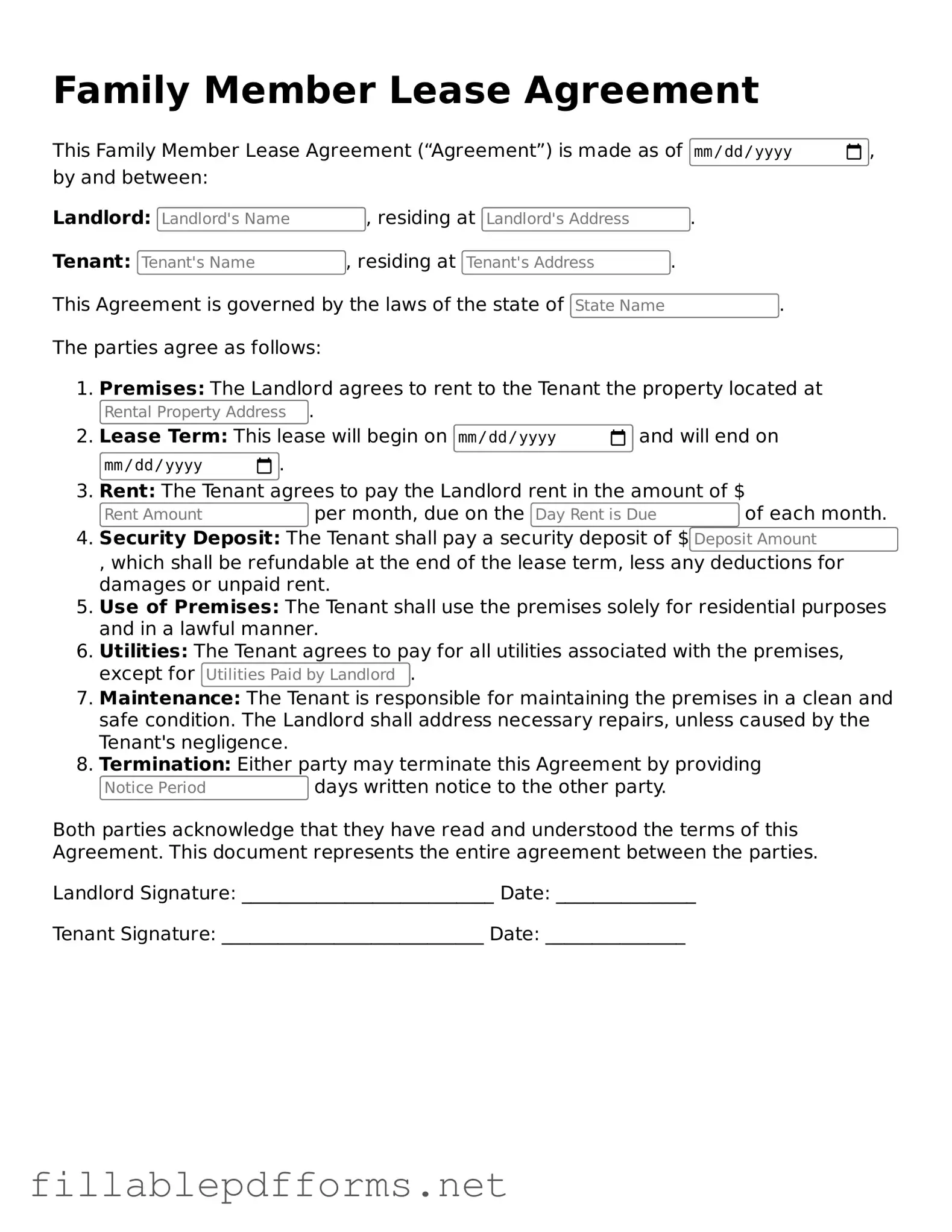Blank Family Member Lease Agreement Template
The Family Member Lease Agreement is a legal document that outlines the terms under which a family member can rent a property from another family member. This agreement helps clarify expectations regarding rent payments, property maintenance, and other responsibilities. By using this form, families can establish a clear understanding and avoid potential disputes in the future.
Launch Editor Here
